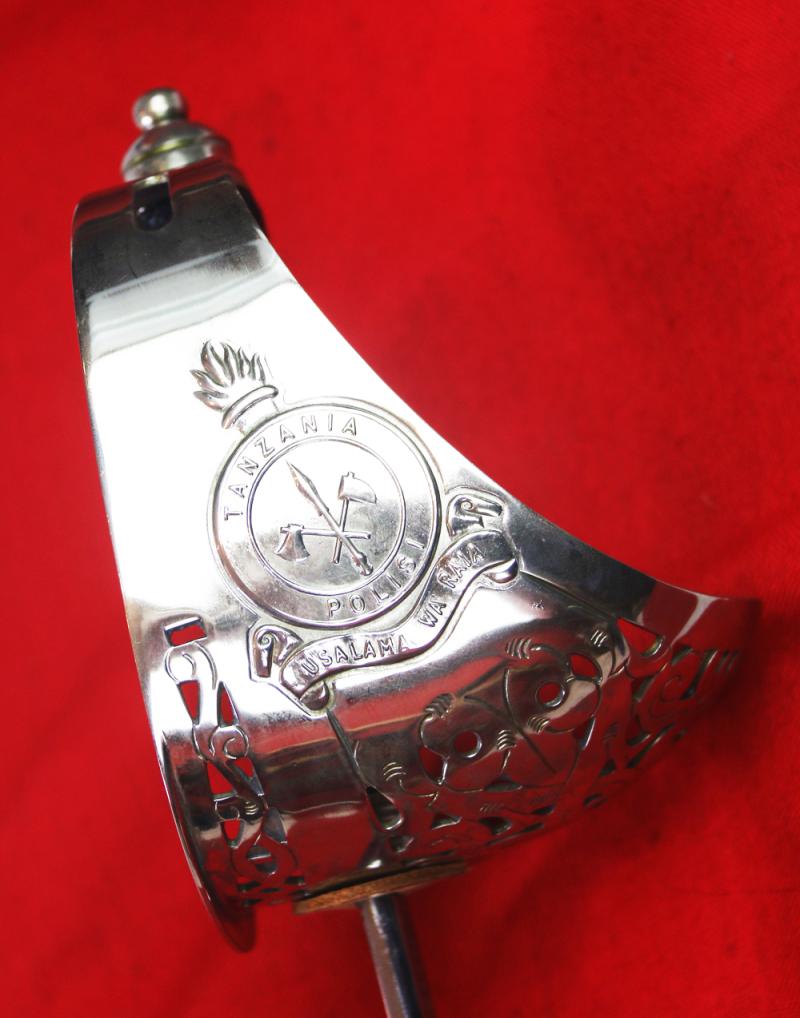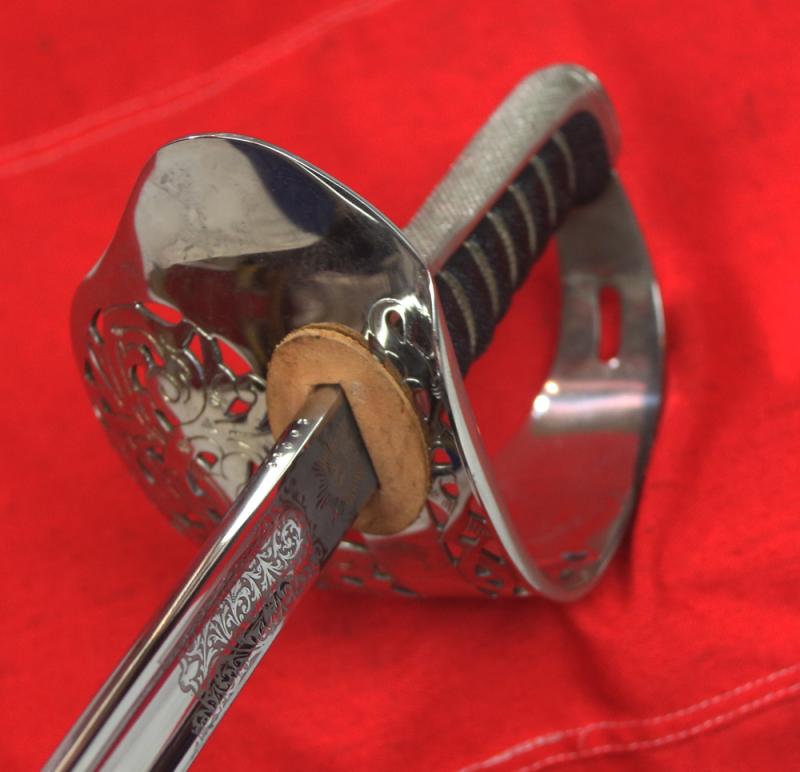An Earliest Independance Pattern Royal Swaziland Police Senior Officer's Sword. Commissioned From Wilkinson Sword In 1969. Superb Condition For Age With Field Service Scabbard
Perfect for the collector of rare patterns of Wilkinson service swords, or a worldwide police service collector, or, a collector of scarce African 20th century service swords. Overall in excellent condition, and Wilkinson serial numbered for its completion and issue in 1969. Made for the initial 1968 order from the King of Swaziland for the renaming of the Swaziland police service. Modeled entirely on the regulation 1897 Pattern British Infantry Officer's Sword, but with the Royal Swaziland Police badge crest and motto, instead of the British sovereign's cypher, which would have been H.M.Queen Elizabeth IInd.
Founded in 1907 when the territory was under British rule, the Royal Swaziland Police Force initially consisted of 22 European officers along with 125 African Zulus, under Captain C.H. Gibson. A police training school was established in Mbabane in 1927 and a modern training college was built in 1965 at Matsapha. During the independence celebrations in 1968 King Sobhuza II renamed it into the Royal Swaziland Police Service, with the legal document that established the organization being the Police Act No. 29/1957.
The 1897 pattern Infantry officer's sword has remained unchanged to the present day.
By the time of its introduction, the sword was of limited use on the battlefield against rapid-firing rifles, machine guns and long-range artillery. However, the new sword was regarded, when needed, as a very effective fighting weapon. Reports from the Sudan, where it was used in close-quarters fighting during the Reconquest of the Sudan 1896-99, were positive.
Field Marshal Montgomery advanced with his 1897 Pattern drawn during a counter offensive in the First World War. The actual sword he carried is exhibited in the Imperial War Museum, London.
The blade is straight and symmetrical in shape about both its longitudinal axes. The thick blade has a deep central fuller on each side and is rounded on both its edge and back towards the hilt, giving a “dumbbell” or “girder” cross section. Through a gradual transition, the blade becomes double edged towards the tip, and the last 17 inches were sharpened when on active service. The blade ends in a sharp spear point.
The guard of the regular British officer’s sword is aldo a three-quarter basket of pressed, plated steel. But it is decorated with a pierced scroll-work pattern and had the royal cypher of the reigning monarch set over the lower knuckle bow, as opposed to the Swaziland Police crest and motto that this fine sword has.
Code: 25477






